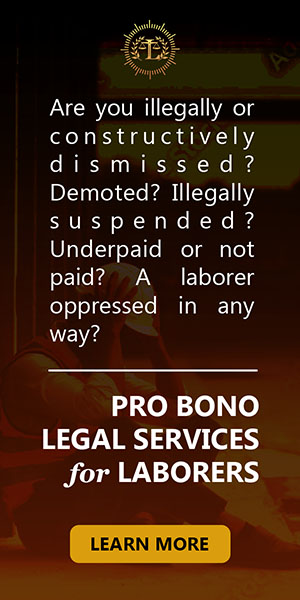CIRCUMSTANCES AFFECTING CRIMINAL LIABILITY
I. Classification: In general the circumstances are either (i) defenses or (ii) modifying circumstances
II. Defenses: those which if proven may result to an acquittal of the offender from the crime charged or lead to non-criminal liability. They are the reasons advanced by the accused why he may not be held criminally liable.
They are classified into the following:
A. As to form:
1. Positive or Affirmative- They are often called defenses in the nature of “Admission and Avoidance”. The accused admits authorship of the act or omission charged and imputed to him but he puts up matters to avoid criminally liability or which will result to his acquittal.
All the Justifying, Exempting and Absolutory Causes are Affirmative defenses.
2. Negative- the accused denies authorship or having performed the act or omission imputed to him. Examples are denial, alibi, mistaken identity.
B. As to Effect:
1. Total or Perfect- those the effect of which will totally exonerate the accused. Example: a complete justifying circumstance, amnesty
2. Partial- those which are intended to lessen the liability of the accused. They include proof the offense is a lesser offenses, or that it is of a lower stage of execution, that the accused has a lower participation and is not the principal .
C. As to source:
1. Legal- those provided for by statutes or by the constitution. For example: prescription of crimes, marriage of the offender and offended; pardon, double jeopardy, amnesty.
2. Factual- those based on the circumstances of the commission of the crime relating to the time, place, manner of commission; identification of the accused; reasons for the commission. For example: alibi, self defense; insanity, mistaken identity.
III. Modifying Circumstances- those which will either increase or decrease the penalty. They are called mitigating or aggravating circumstances
IV. Circumstances Recognized in the Philippines.
They are found either in the Revised Penal Code, Special Laws or in jurisprudence. The defenses and modifying circumstances governed by the RPC include the following:
A. Justifying Circumstances- These are the defenses in which the accused is deemed to have acted in accordance with the law and therefore the act is lawful. Since the act is lawful, it follows that there is no criminal, no criminal liability and no civil liability, save in paragraph 4.
1. There is no mens rea or criminal intent
2. The circumstances pertain to the act and not to the actor. Hence all who participated in the act will be benefited. Thus if the principal is acquitted there will be no accomplices and accessories.
3. These apply only to intentional felonies, not to acts by omissions or to culpable felonies or to violations of special laws
4. They are limited to the 6 enumerated in Article 11.
B. Exempting Circumstances- These are defenses where the accused committed a crime but is not criminally liable. There is a crime, and there is civil liability but no criminal.
1. The basis is the lack of any of the elements which makes the act/omission voluntary, i.e. freedom, intelligence, intent or due care.
2. These defenses pertain to the actor and not the act. They are personal to the accused in whom they are present and the effects do not extend to the other participants. Thus if a principal is acquitted, the other principals, accessories and accomplices are still liable.
3. They apply to both intentional and culpable felonies and they may be available in violations of special laws.
4. They are limited to the 7 enumerated in Article 12.
C. Absolutory Causes- These are defenses which have the same effects as the exempting circumstances but they are not among those enumerated in Article 12. They are found in certain Articles of the Revised Penal Code or are developed by jurisprudence.
1. They are based on public policy
2. Examples of those in the RPC include: non-liability for an attempted felony due to voluntary desistance; Death/Physical Injuries Under Exceptional Circumstances
3. Those recognized and developed by jurisprudence include: mistake of fact, set-up/frame up, instigation
D. Mitigating Circumstances- Those which when present results either to: (i) the penalty being reduced by at least one degree or (ii) the penalty shall be imposed in its minimum period. They are those enumerated in Article 13.
E. Extenuating Circumstances- .Those which have the same effect as mitigating circumstances but are not among those enumerated in Article 13 but are provided for in certain articles of the RPC and apply only to certain felonies. They are called “Special Mitigating Circumstances”.
1. Examples: Abandonment in case of adultery; Release of the victim within 3 days with the purpose not attained, in the felony of Slight Illegal Detention
F. Aggravating Circumstances- Those which when present will result either to: (i) a change in the nature of the offense as to make it more serious and result to the imposition of a higher penalty (ii) the penalty being imposed in its maximum period. They are provide for by the Revised Penal Code as well as by special laws.
G. Alternative Circumstances- those which may either be appreciated as mitigating or aggravating. They are enumerated in Article 15 of the RPC.
IV. Basic Rules on Affirmative Defenses
A. Justifying Circumstances, Exempting Circumstances, and Absolutory Causes, are recognized as Affirmative Defenses
B. Since the accused has admitted authorship of the act or omission, it’s not anymore necessary for the prosecution to prove his participation in the commission of the crime or his identity, hence there may be a revere order of trial in that it will be the accused who will be the first to present his evidence
C. It is incumbent upon the accused to prove his defense by” clear, positive and convincing evidence” and his conviction is not that the prosecution failed to prove his guilt but that he was unable to prove his defense.



 Spotify
Spotify  iTunes
iTunes  AppleMusic
AppleMusic  YouTube
YouTube 


